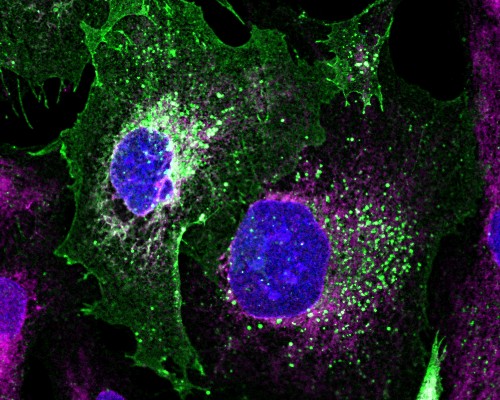Gene Therapy Delivered via High-Capacity Baculovirus
Date: 29.7.2022
Some of the newest and most exciting gene therapy technologies share a problem: They’re too bulky. They rely on multiple functional DNA and protein elements that must reach target cells all at the same time, even though they have trouble fitting into the usual delivery vehicles, which include vector systems based on lentiviruses, adenoviruses, and adeno-associated viruses.
 To create a more capacious delivery system, scientists based at the University of Bristol turned to a rod-shaped baculovirus. As a gene therapy vector, the baculovirus offers a valuable trait: It simply becomes longer to accommodate larger gene therapy cargoes. The scientists, who were led by Bristol’s Francesco Aulicino, PhD, and Imre Berger, PhD, recently presented their baculoviral delivery system in the journal Nucleic Acids Research.
To create a more capacious delivery system, scientists based at the University of Bristol turned to a rod-shaped baculovirus. As a gene therapy vector, the baculovirus offers a valuable trait: It simply becomes longer to accommodate larger gene therapy cargoes. The scientists, who were led by Bristol’s Francesco Aulicino, PhD, and Imre Berger, PhD, recently presented their baculoviral delivery system in the journal Nucleic Acids Research.
The paper described how a baculovirus was engineered so that it could enter human cells efficiently. (Baculoviruses, which typically infect insect cells, do not replicate in human cells.) The paper also presented evidence that the engineered baculovirus delivered gene editing materials to correct a genetic defect in kidney podocytes derived from patients with steroid-resistant nephrotic syndrome (SRNS).
“What sets apart baculovirus from lentivirus, adenovirus, and adeno-associated virus is the lack of a rigid shell encapsulating the cargo space,” Aulicino remarked. “There are many avenues to utilize our system. In addition to podocin repair, we could show that we can simultaneously correct many errors in very different places in the genome efficiently, by using our single baculovirus delivery system and the most recent editing techniques available.”























